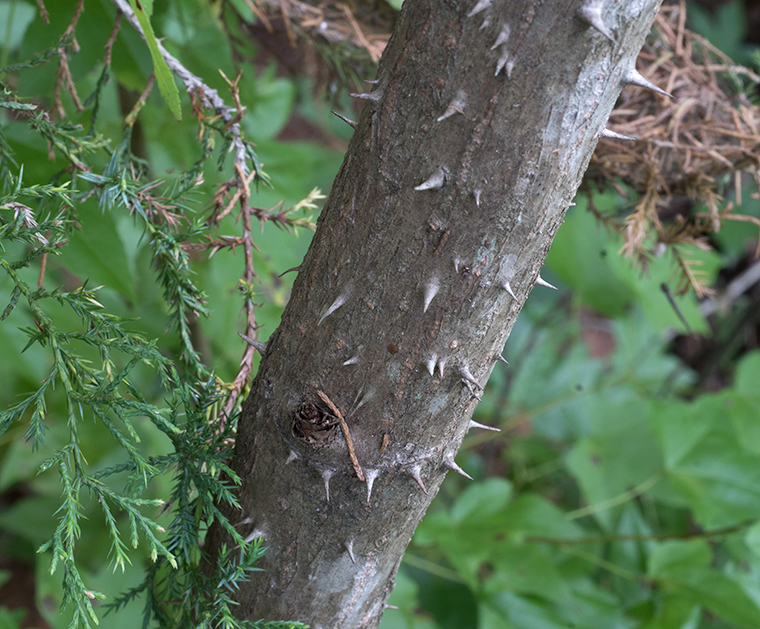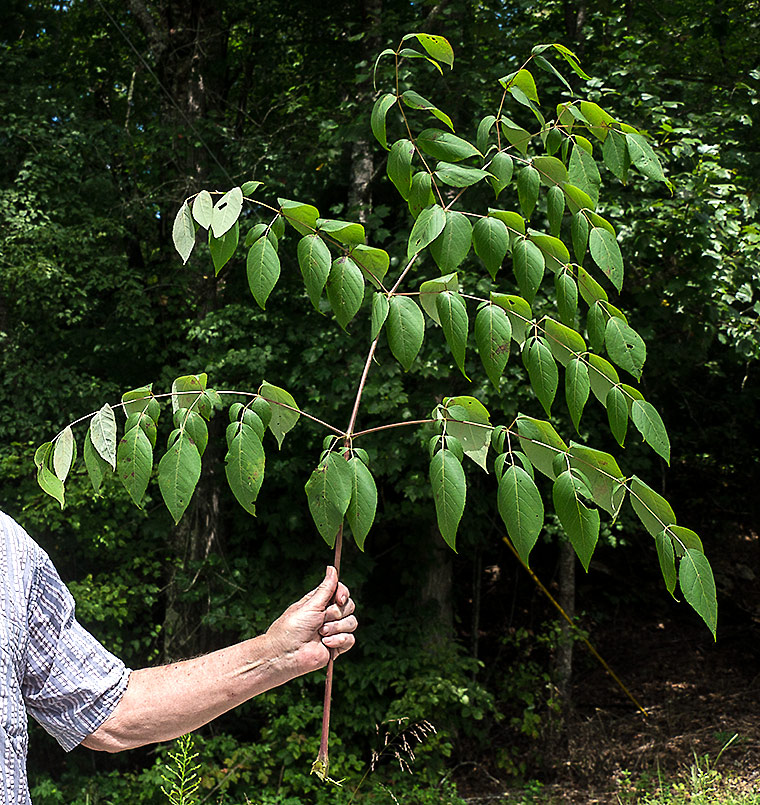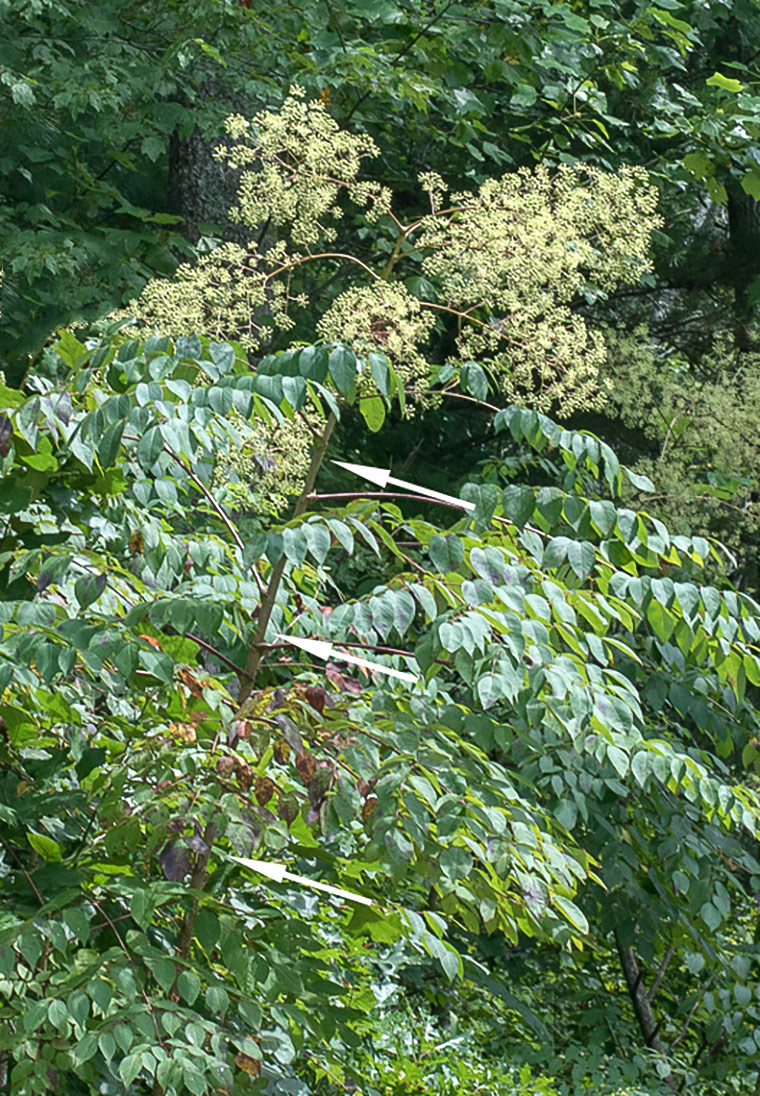Picture this. You are walking through the woods, perhaps up a slight slope. To gain some stability you grab the sturdy-looking sized trunk of a small tree for support. Ouch! That hurt!
You have encountered the “Devil’s Walking Stick” (Aralia spinosa) also called “Hercules’ Club” with its array of stout thorns. So named because the Devil (as an aid in walking) or Hercules (as an aid in clubbing) could presumably utilize the trunk of this small tree with impunity. The stem of the specimen pictured here is about three inches in diameter.
In the photograph above, I am holding a single leaf. These leaves are three feet long or more and doubly compound. In fact, the leaves are the largest of any temperate plant native to the U.S. (of course, some palms have larger leaves, but they are not classed as temperate plants).
Devil’s Walking Stick has an interesting growth form. It has a straight, unbranched main stem with most of the leaves grouped at the top…sort of like a palm tree. In late summer, Devil’s Walking Stick is flowering, and the flowers occur in very large, white or pale yellow clusters at the very top of the plant. In the photograph above, I have added some white arrows to show the stem of the plant, and the large flower cluster is visible at the top. Later in the season masses of small purple fruits will develop from the flowers.
Look for a closer look at the flowers and fruit in subsequent posts.



